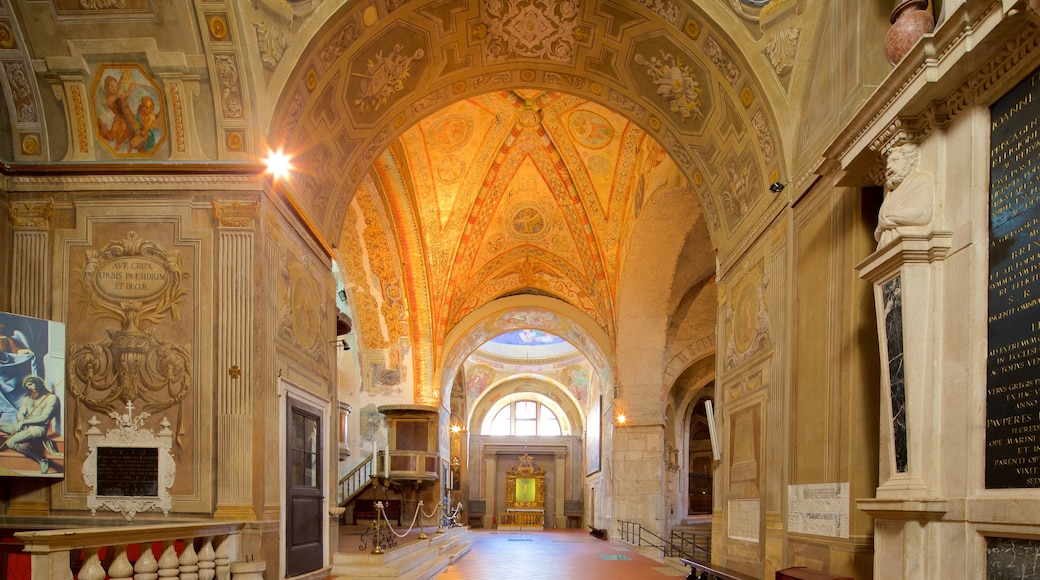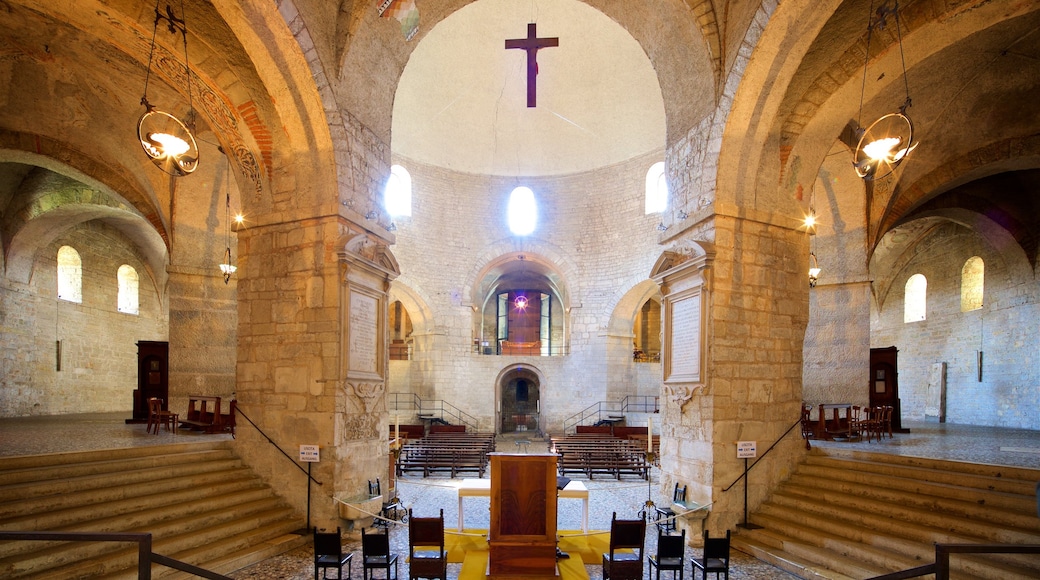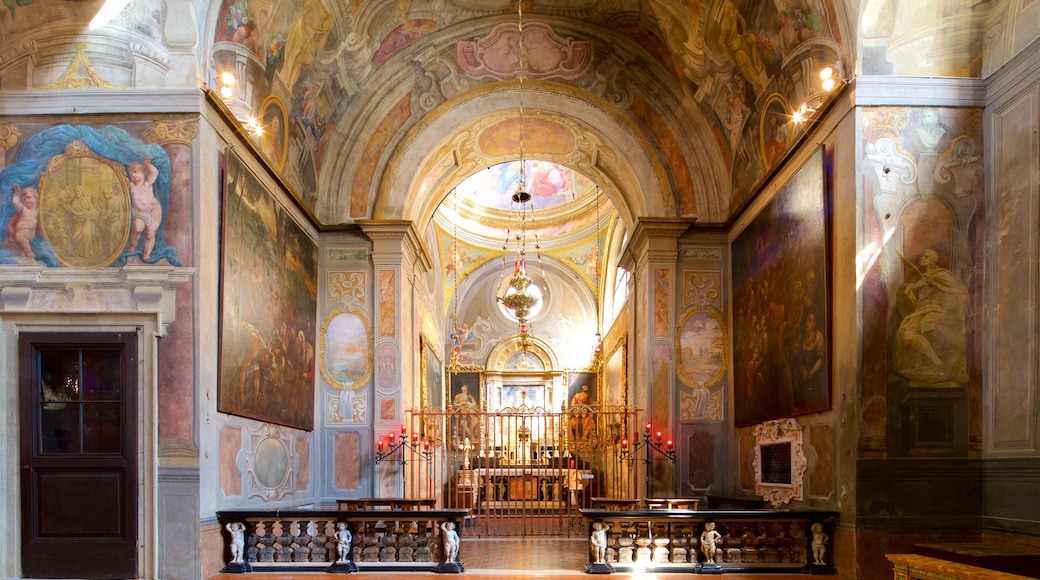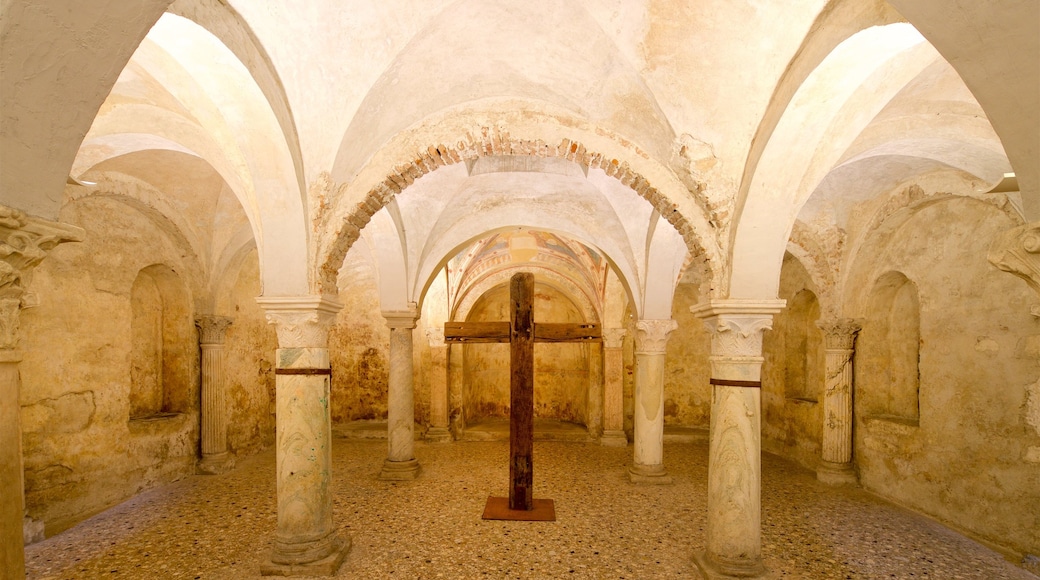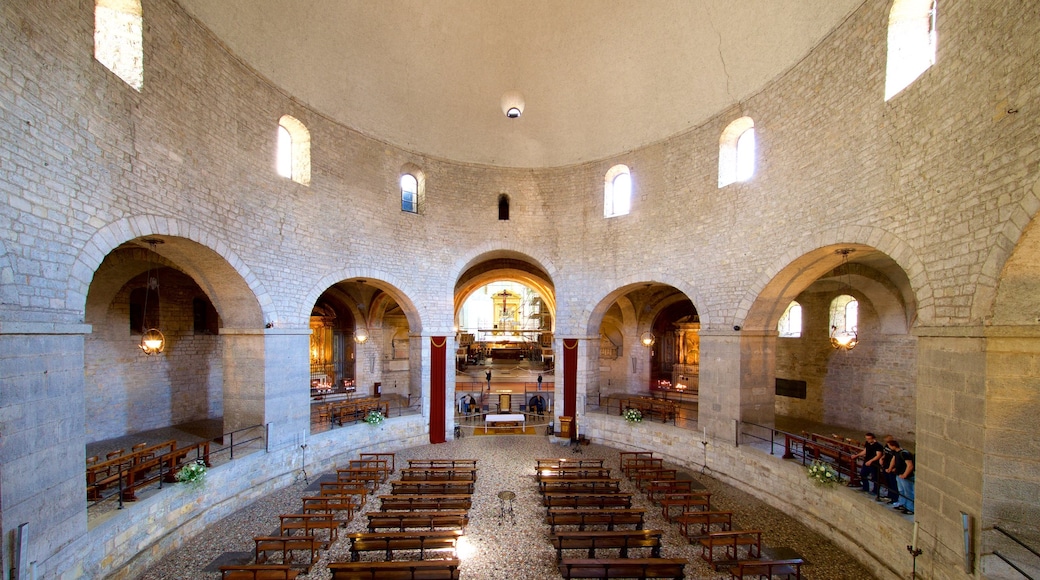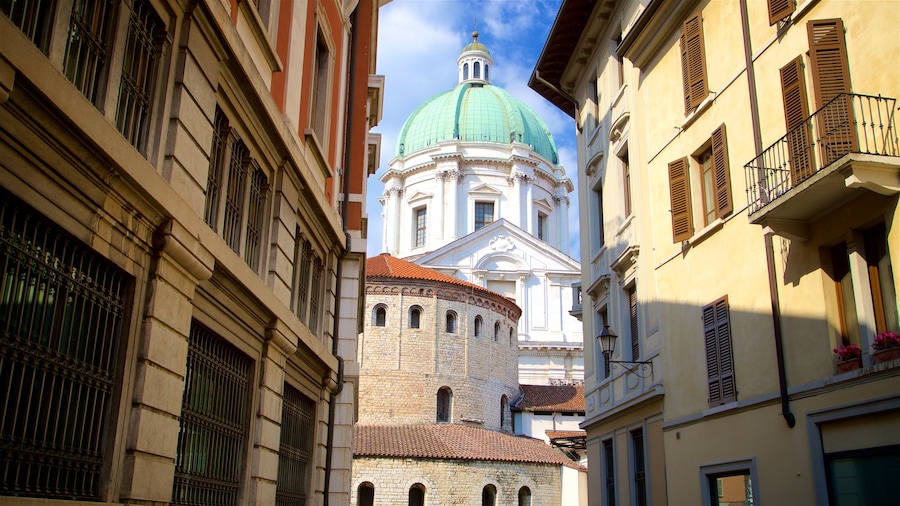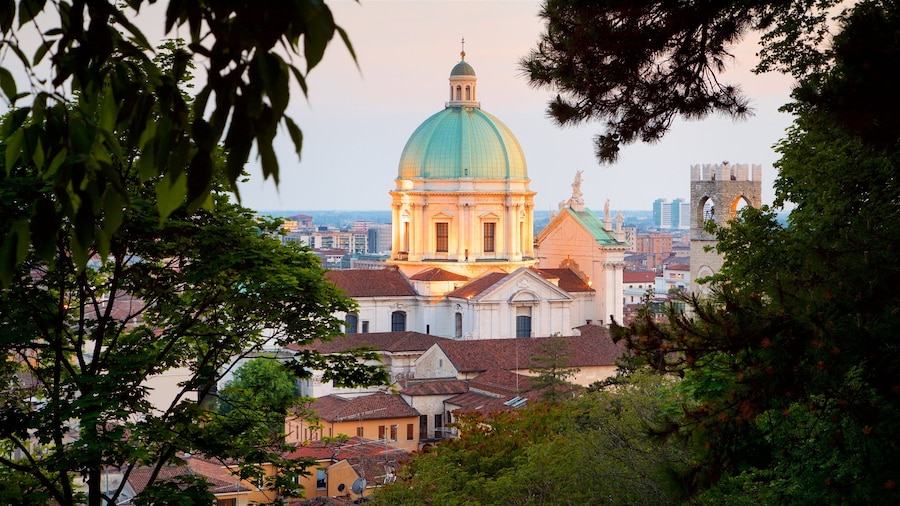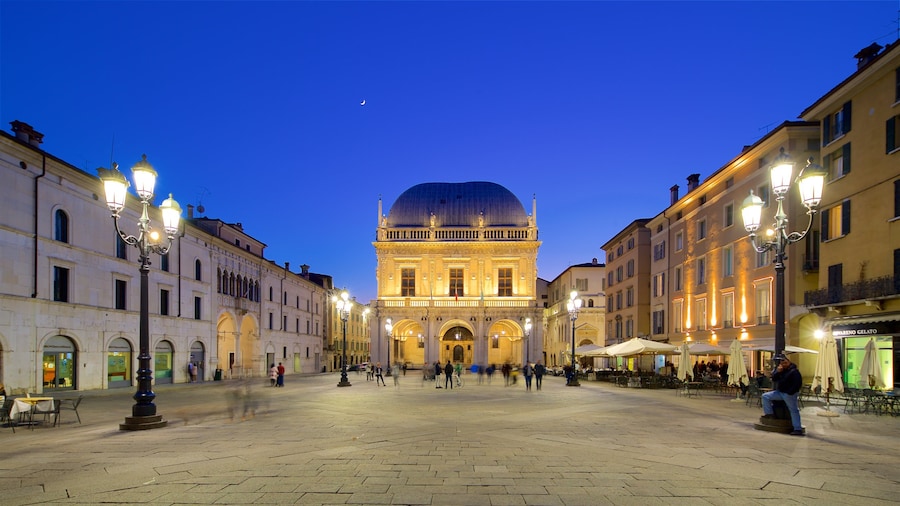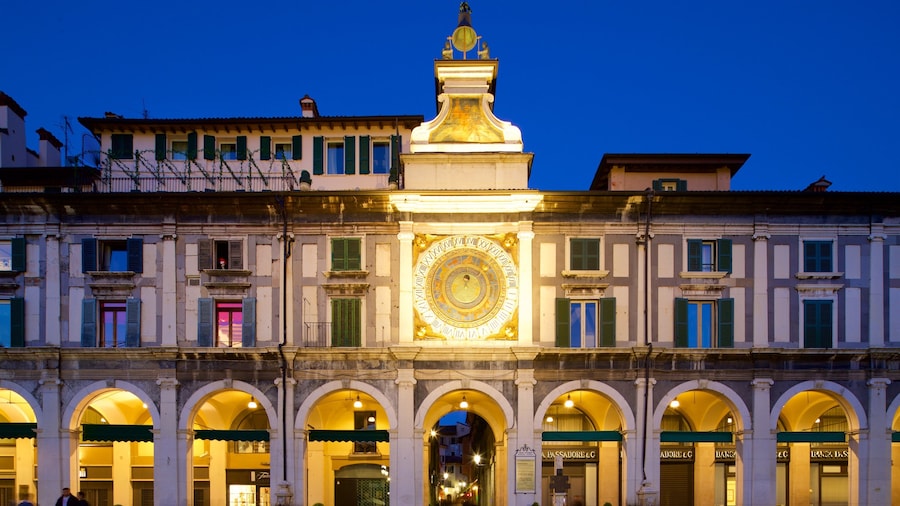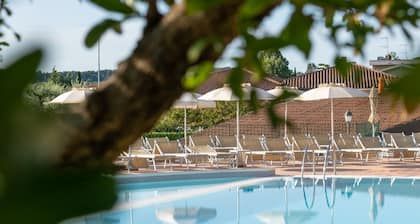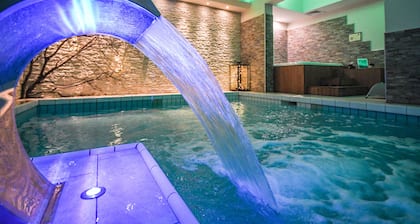Duomo Vecchio, meaning “old cathedral,” is a religious monument that is rich in history. Visit the church to discover several interesting historic features, including parts of an ancient mosaic that is thought to have once been part of a Roman thermal bath complex.
Read up on the history of the cathedral before you visit or sign up for a guided tour and have a knowledgeable local recount the history of the landmark structure. The cathedral was built in the 11th century on the ruins of an earlier Christian basilica, some remnants of which can still be seen today.
Look for the distinctive dome of the cathedral as you approach the piazza upon which it stands. The cathedral is sometimes called the “Rotonda” (rotunda) because of its circular shape.
Upon entering, pause to admire the sarcophagus of Bishop Berardo Maggi, which stands near the doorway. This red-marble coffin features elaborate sculptural details. Take a moment to soak up the peaceful and reverent atmosphere of the church’s hushed interior.
Head to the presbytery to view the crypt of St. Philastrius, the former Bishop of Brescia. Dating back to the 9th century, this crypt features a mosaic depicting lambs and can be viewed through a glass opening in the floor.
Inspect the ancient floor mosaics that are believed to date back to Roman times. Experts speculate these could once have been part of a thermal spa complex that existed on this spot in the 1st century B.C. Other vestiges from Roman buildings, including columns and capitals, can be seen in the cathedral, though most of these were restored and repurposed for use in the construction of the church.
Find the Duomo Vecchio in the center of Brescia, right beside the more modern Duomo Nuovo. It’s worth visiting both to compare the contrasting styles. The Duomo Vecchio is open daily. Go in the morning or later afternoon as it is often closed for a couple of hours around lunchtime. Entrance is free.
